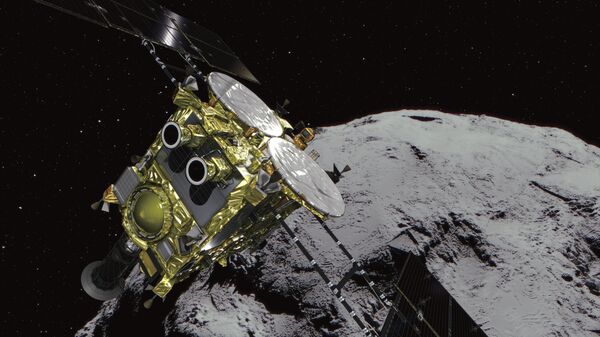The Japan Aerospace Exploration Agency, aka JAXA, has stated that its Hayabusa2 spacecraft has dropped an explosive onto an asteroid to make a crater and later collect the underground samples from there. According to the agency, it was a "small carry-on impactor" about the size of a baseball, made of copper and weighing 2 kilograms.
After this riskiest of missions, Hayabusa2 had to evacuate to the other side of the asteroid so it would not be damaged by the fragments after the blast.
READ MORE: Japan’s Spacecraft Shoots Asteroid with Bullet to Collect Samples (VIDEO)
On its way to safety, it was also scheduled to leave a camera to capture the results of the operation and let scientists on Earth see it. The operation was broadcast on the agency’s channel.
Hayabusa2 is expected to return to the crater later, when the dust from the blast settles, to get hold of underground samples and explore the site.
In February, it studied the asteroid’s surface, collecting dust and small fragments. However, scientists will only be able to get this package from the asteroid named Ryugu after an undersea palace from Japanese fairy tales by late 2020, as Hayabusa2 is set to leave space only by the end of this year and travel 300 million kilometres back to Earth.
If the mission is successful, it will be the first time a spacecraft has collected asteroid fragments that have not been exposed to solar or space rays. A similar "deep impact" mission by NASA that was launched in 2005, only observed debris.
Meanwhile, the information, scientists hope to get after studying the asteroid’s debris, might give them insight into not only the asteroid but also our planet and solar system.




